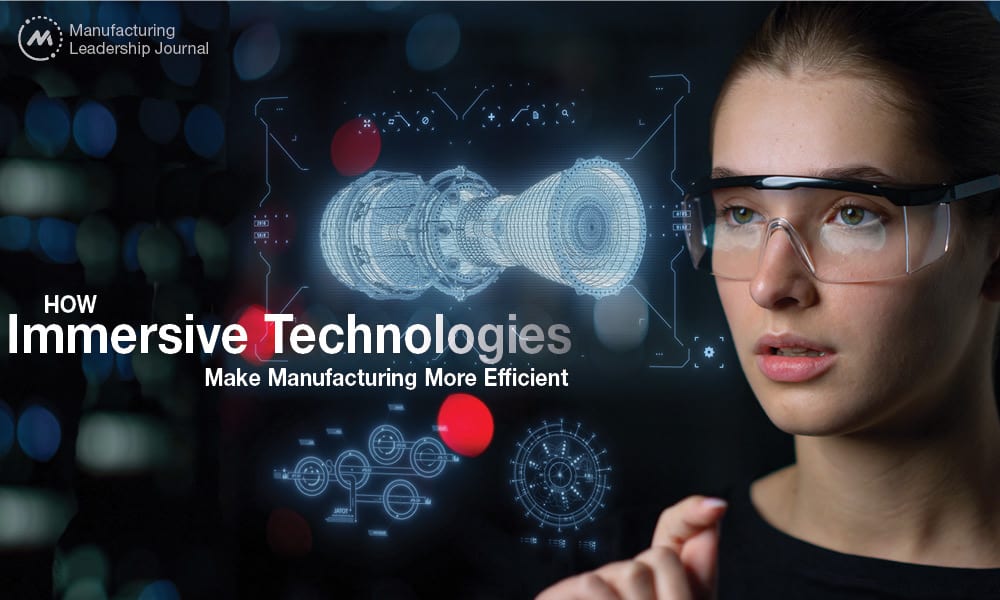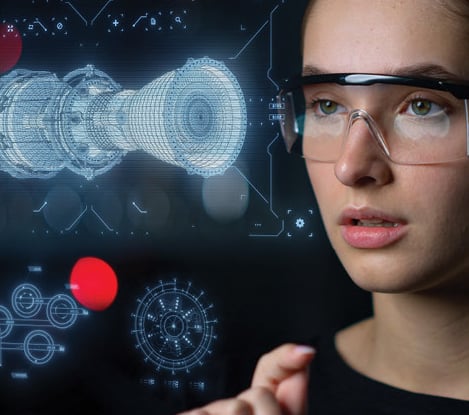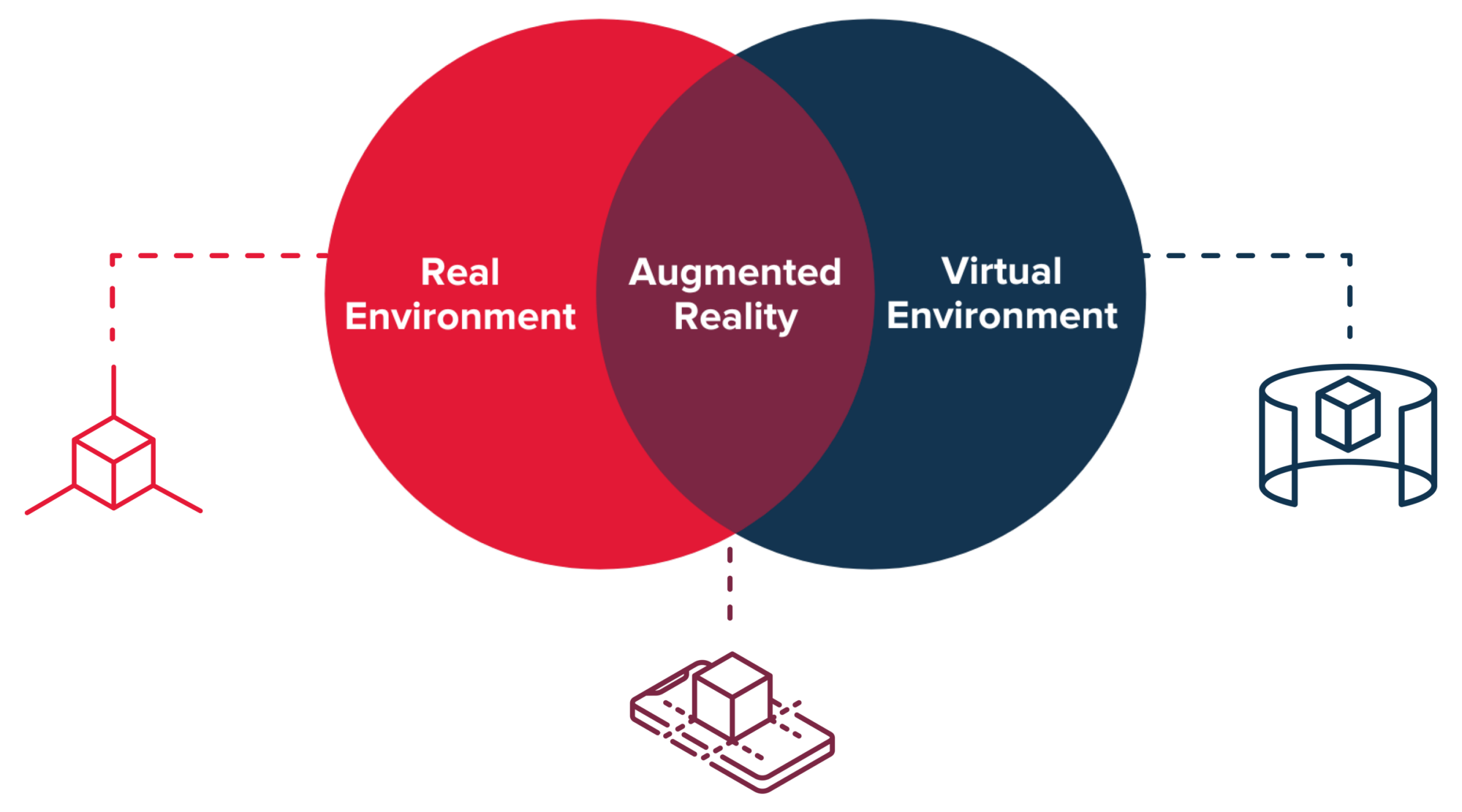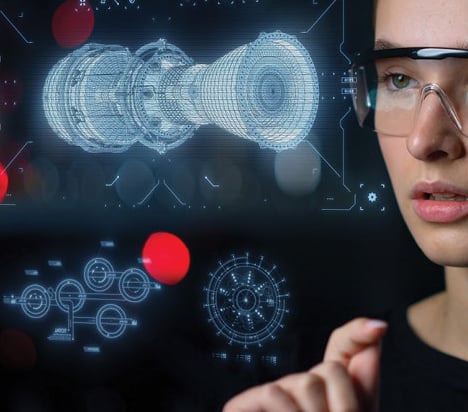How Immersive Technologies Make Manufacturing More Efficient

Immersive technologies strengthen asset management and bolster smart factories.

TAKEAWAYS:
● Higher levels of reliability, speed, and productivity as well as enhanced safety and compliance are benefits of immersive technologies in smart factories.
● Immersive technologies reduce training costs and increase new-hire productivity with real-time, interactive, on-the-job training.
● Tools like augmented reality and virtual reality enhance maintenance practices, reduce downtime, lower maintenance costs, and enhance manufacturing performance.
While manufacturing automation could be considered the original smart factory technology, it is certainly far from the last. Transformative technologies are making inroads at all levels of plant operations, including equipment maintenance and repairs.
Not long ago, industrial maintenance was primarily a laborious, reactive function routinely performed after the damage was done or the asset ran to failure. This changed with the advent of Industry 4.0 technologies, which made the maintenance of complex and increasingly sophisticated equipment more proactive, predictive, and to some extent even automated. Using smart maintenance tools and practices helps manufacturers avoid costly equipment failures and unplanned production downtime, and enables plants to increase performance and throughput and boost the bottom line.
Immersive technologies such as augmented reality (AR), virtual reality (VR), and mixed reality (MR) are prime examples of smart maintenance technologies. Providing an immersive reality experience to technicians and reliability engineers is transformative in terms of improving maintenance efficiency and effectiveness. In turn, immersive technologies drive smart factories to higher levels of reliability, speed, and productivity while enhancing safety and compliance.
Immersive Technologies Explained
Immersive technologies extend and deepen the information available from which manufacturers can make decisions and take action. Digital or simulated reality supplement a technician’s perceived reality in the real world. There are three immersive technologies commonly used: augmented reality, virtual reality, and mixed reality
Augmented Reality
AR augments the scope of information available to technicians beyond what their senses, memory, work orders, inspection checklists, or other materials normally at hand provide. It takes live video of the real asset or environment via a camera-equipped phone, tablet, or wearable such as goggles and glasses (for a hands-free approach), and then overlays these additional digital images, graphics, notes, or other supporting materials over the real-world setting—on demand, in real-time, through a head-up display. Hand gestures, eye tracking, and voice recognition are among the ways a technician can request supplemental data and imagery and take it into immediate consideration.

“Augmented reality stands out for its hands-free, real-time data access, empowering technicians with unparalleled insights on the shop floor.”
To further facilitate maintenance and inspection, AR with audio capabilities enables real-time communication with remote experts, anywhere in the world, who can assist by answering questions, diagnosing problems, or guiding the technician through specific tasks—without incurring the time and travel costs of an on-site visit. AR stands out for its hands-free, real-time data access, empowering technicians with unparalleled insights on the shop floor.
Virtual Reality
VR headsets bring technicians into a completely virtual world, separate from their physical surroundings, so they can actively and safely interact with the virtual environment.
VR is frequently used in manufacturing to simulate real components, machines, processes, or facilities, and the virtual environment then becomes a maintenance training and troubleshooting aid. It provides a “hands-on” experience without putting the employee or equipment at risk of errors. VR also serves as a design and optimization aid for reliability engineers, who can simulate and improve conceptual assets or environments before seeking investment in the physical solution. VR solutions with remote collaboration capabilities enable more effective discussions because the participants can interact with the virtual components and “see” how they might work in a real-world setting—compared to simply studying technical drawings or CAD models.
Virtual reality’s potential for cost savings through remote access to parts and machinery is a game-changer for communication and training processes, offering greater timeliness and efficiency.
Mixed Reality
MR blends the capabilities of AR and VR. It allows users to interact with both real-world and virtual objects at the same time, or to have touchpoints to the real world while immersed in a virtual world. As an example, a technician working on a pump can call up the work history and a digital twin of a component for additional context (AR), and then manipulate the digital twin (VR) to explore different ways to tackle the problem before applying the best option to the pump.
Each of these immersive technologies enhances maintenance practices by delivering the right information at the right time, with minimal effort. Using tools like these to reduce downtime and maintenance costs elevates manufacturing performance.
Figure 1: AR/VR Explained

Positive Influence on Maintenance and Manufacturing
Applications for immersive technologies in maintenance are widespread and growing rapidly. This trend is not surprising considering the increasing sophistication of industrial machines and the risks of failure. Smart factories are gaining extensive efficiencies and operational benefits from immersive maintenance practices across the board. We highlight seven specific benefits:
- Maintenance: Industrial maintenance, troubleshooting, diagnostics, and inspections are more accurate when technicians can see, right in front of the equipment being serviced, digital aids such as instructional notes with arrows prompting them through the task at hand. Immersive reality makes the old ways of digging up supporting or historical materials or working with incomplete information, antiquated. Immersive technologies improve maintenance quality, repair time, and the first-time fix rate while reducing scrap and rework.
- Operations: Operator rounds are more effective when the operator can call up historical data to evaluate whether the present conditions are anomalous.
- Training: Learning and practicing maintenance tasks in a virtual space, and refreshing and reinforcing knowledge using augmented means, protects employees and equipment by ensuring those doing the work have every opportunity to do their jobs correctly. Immersive technologies reduce training costs and increase new-hire productivity with real-time, interactive, on-the-job training. It facilitates knowledge transfer from more experienced personnel and enables remote coaching and upskilling to keep up with changing technologies, processes, and standards.
- Safety and regulatory compliance: Manufacturers can avoid safety incidents when technicians can troubleshoot problems in a virtual environment without having to disassemble the equipment. Lockout/tagout procedures and safety data sheets cannot be missed when they appear in front of the technician’s eyes. Simplifying the way records of performed work are captured ensures proper documentation is available for audits.

“Virtual reality’s potential for cost savings through remote access to parts and machinery is a game-changer for communication and training processes, offering greater timeliness and efficiency.”
- Reliability engineering: When a virtual playground for experimentation and improvement exists, design for reliability and asset optimization initiatives can thrive.
- Cost control: Immersive technologies have immediate cost benefits in addition to the extensive savings that come from improving asset reliability, efficiency, safety, and reducing downtime. In one example, Advanced Technology Services (ATS) observed that instead of having an original equipment manufacturer (OEM) provide in-person maintenance support that would have required two full days (16 hours) at $250 per hour, enabling remote OEM support using AR integrated with Microsoft Teams saved the manufacturing plant thousands of dollars.
- Recruiting: Modern maintenance technologies and processes are appealing, particularly to the younger generation, and highly beneficial in recruiting and retaining talent. AR, VR, and MR help to close maintenance skills gaps by enabling the development of a global technical workforce that communicates as if they were all present locally. Lessening the dependence on the experience of individual technicians is more important than ever with the rapid advancements being made in manufacturing technology. Advanced controls, sensors, networking functions, and robotic processes are just the beginning as the industry moves toward Industry 4.0.
Tooling for Future Factories and Industry 5.0
The factories of the future are smart. According to PwC, one-third of manufacturers have already embraced smart factory technologies, and the numbers are set to grow even more in the next few years. The statistics speak volumes about the significance of maintenance technology in modern manufacturing.
Immersive reality is among the technologies leading the way to the next industrial revolution. With immersive technologies gaining momentum, Gartner’s prediction that 75 percent of large enterprises will integrate AR and VR in the next few years emphasizes the importance of staying ahead of the game for manufacturers.
Take the Plunge
Thanks to innovative, transformative solutions such as immersive technologies, maintenance technology will continue to play an outsized role in strengthening modern manufacturing. But with so many compelling devices and virtually unlimited applications to choose from, assessing, prioritizing, and implementing solutions that will have the greatest effect is challenging without the right know-how.
To simplify the process and expedite the rewards, look for an industrial technologies service partner like ATS that has extensive experience in the latest industrial technologies and maintenance and reliability expertise to help manufacturers improve uptime and save costs. Partnering helps factories keep their equipment running reliably and efficiently when internal resources are limited, and it facilitates the adoption of digital transformation to give manufacturers a competitive edge.
About the authors:

Chris LeBeau is the Chief Technology Officer at Advanced Technology Services. He works with industrial maintenance experts and technology leaders to enable Industry 4.0 strategies and maximize the value of technology to manufacturers.

Micah Statler is the Director of Industrial Technologies at Advanced Technology Services. He is responsible for the strategy, execution and delivery of technology-driven maintenance solutions.